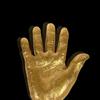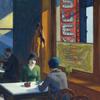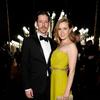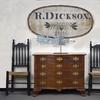First U.S. Solo Exhibition of Photographs by Ulrich Wüst Reveals Behind-the-Iron-Curtain East Germany
- NORFOLK, Virginia
- /
- November 03, 2016
On the occasion of the 26th anniversary of the reunification of Germany, The Chrysler Museum of Art proudly presents Public and Private: East Germany in Photographs by Ulrich Wüst. This exhibition of works by the master photographer made during the Cold War era will be on view in the Museum’s Frank Photography Gallery and Focus Gallery (Galleries 228 and 229) from November 17, 2016 through March 26, 2017.
Public and Private: East Germany in Photographs by Ulrich Wüst explores East German public planning under Socialist rule and how private life resists conformity. Evocative views of the former totalitarian state and transformations of the capital, Berlin, before and after reunification are seen in Wüst’s 84 black and white prints and in more than 200 album-mounted prints. This is the German photographer’s first solo exhibition in the United States. The show is curated by Gary Van Zante of the MIT Museum, where it debuted, in collaboration with the artist and Loock Gallery, Berlin.
“Ulrich Wüst’s photography was largely unknown in the West until after the fall of the Berlin Wall. Since then, his work has come to be recognized as one of the strongest aesthetic statements made in the Socialist state,” Van Zante says.
Trained as an urban planner, Ulrich Wüst (b. 1949) took up photography in the 1970s as a rhetorical and documentary tool for studying the development of cities. His early work focused on his hometown, Magdeburg, as well as Leipzig and other East German locales that were slowly recovering from the destruction of World War II. In these and other cities, the Socialist regime constructed massive and often dehumanizing housing blocks in peripheral districts while failing to reconstruct historic city centers. Through his photographs, Wüst critiqued the East German approach to city building.
“I wanted to create a landscape of the soul, drawing attention to what we had done to ourselves with our city planning,” Wüst recalled.
Fascinated with the outward appearance of East German cities, Wüst also created work that focused on the interior lives of the people inhabiting them. The Socialist focus on communal public life and the absence of any real civil society intensified East Germans’ sense of private life—a “collective feeling of privacy,” as one East German described it. Public and Private pays particular attention to Wüst’s interior portraits—intimate in both subject and scale—which he often assembled in albums for private viewing. The personal sphere that Wüst documented runs parallel to the public street and city views executed at the same time. These twin directions provide the exhibition’s theme.
“With gritty immediacy, Wüst’s photos convey the sense of depersonalization in cities beset by standardized housing and looming monuments,” says Seth Feman, Curator of Exhibitions and Acting Curator of Photography at the Chrysler. “Simultaneously, he reveals the creative interior lives of those living amid the totalitarian state’s regime of sameness.”
Wüst produced many of his albums in an unusual leporello, or accordion-book, format—a form of visual archiving that recalls 19th-century souvenir albums. His leporellos map artistic and social life in East Germany and the daily life of the artist in picture cycles that he often continued over long periods of time.
The photographer’s first solo exhibition was in 1980 in East Berlin, where he has lived since 1972. His images document small gatherings of artists and spontaneous exhibitions, sometimes illegal, in Berlin, especially in the Prenzlauer Berg district, where many artists lived. “People constantly visited each other in [the East] as only a few had telephones and it was difficult to arrange meetings,” Wüst recounted. His portrait series Visitors (Besucher) documents the writers, architects, artists, and others who came to his home, including some who left East Berlin for opportunities in the West.
As Wüst was one of a relatively small number of art photographers who created an East German photographic identity during this period, his work raises questions about artistic freedom in a collective society. Although the government officially controlled art practice and state-sanctioned exhibitions and publications often featured regime-affirming work, many photographers like Wüst moved in and out of official culture.
The show includes the full chronological range of Wüst’s work, from the 1970s to recent projects documenting the transformation of Berlin following reunification. In his current work, he continues to focus on German cities and historic memory.
Public and Private: East Germany in Photographs by Ulrich Wüst will be on view at the Chrysler Museum of Art, One Memorial Place, Norfolk, Va., from November 17, 2016 through March 26, 2017. Admission is free.
















100x100_c.jpg)